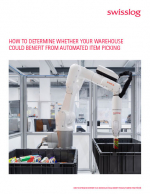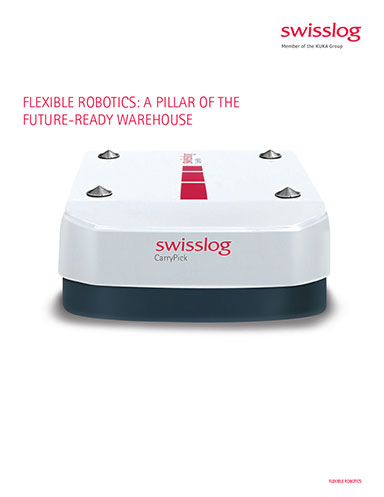Flexible Robotics: A Pillar of The Future-Ready Warehouse
With the continued march of e-commerce and omnichannel fulfillment, warehouse operators must get efficient at order picking at the “each” level, simply throwing more human labor at the challenge becomes expensive and hard to sustain.
The robotic solutions now being used in the warehouse are different from those of the past in several important ways.
A procession of new technologies continues to enhance the efficiency with which we do business. Cloud computing, Big Data, artificial intelligence (AI) and the Internet of Things (IoT) all represent potential breakthroughs for productivity and have received considerable attention. Yet, an equally powerful technology is often overlooked because it has been around for decades.
That game changer is robotics, and its breakthrough comes from new and more varied capabilities, smaller and mobile form factors, and lowered deployment costs. While not new, robotics has advanced in significant ways that open the technology to exciting new use cases in the supply chain.
The stationary robotic arms that have been used successfully for decades in sectors such as automotive manufacturing remain highly valuable, but the new gains in markets like distribution are coming from smaller robots that can work collaboratively alongside humans (cobots), and mobile autonomous robots that can travel through warehouse aisles to execute tasks more efficiently than human labor alone can.
These advances are being made by established leaders in robotics, such as Swisslog’s parent KUKA. KUKA has leveraged its own robotics expertise, along with the supply chain expertise within Swisslog, to bring these new mobile and modular robotic solutions to the warehouse.
The robotic solutions now being used in the warehouse are different from those of the past in several important ways. First, costs have come down significantly, making robots more cost effective to implement in more situations. And, while costs are on the decline, capabilities are growing and use cases are expanding. Sensors, vision, gripping and navigation technology have all advanced, enabling greater autonomy and safe operation around humans. Finally, recent developments in
AI and machine learning are reducing development costs and increasing adaptability, making more applications possible with greater cost-effectiveness and enhanced safety.
The increasing value proposition of robotics is reflected in bullish predictions. Analyst firm Interact Analysis forecasts the market for autonomous mobile robots (AMR) and smart automatic guided vehicles (AGV) for logistics will grow from $300 million in 2017 to $3 billion by 2022, roughly a 10-fold increase.
What’s Related




Favorites





